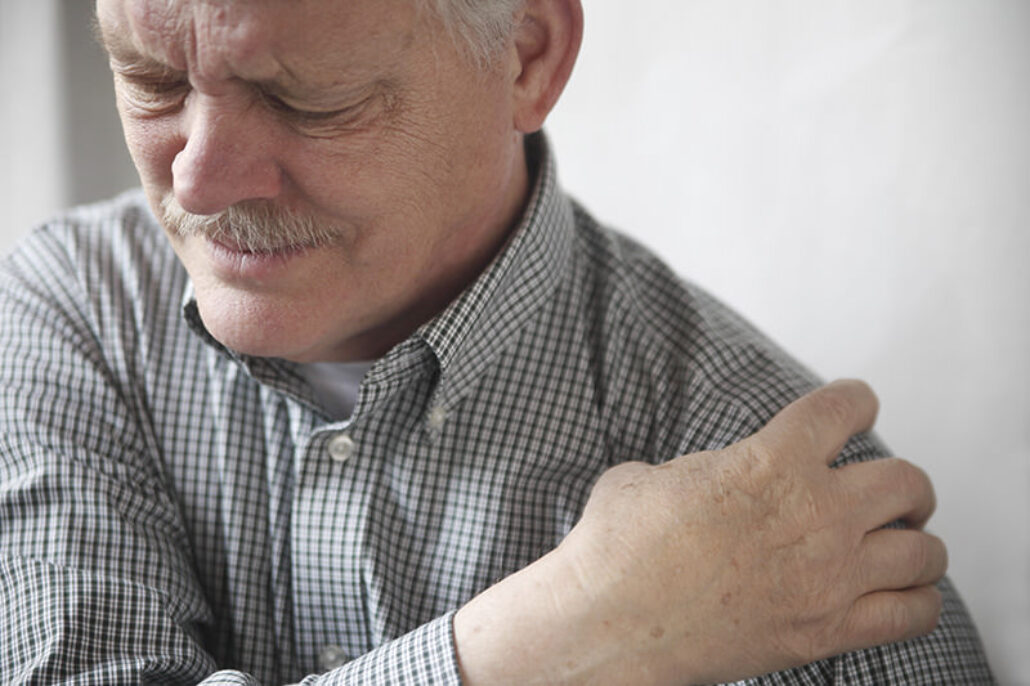A new study published in the Annals of Internal Medicine compares the effectiveness of physical therapy versus steroid injections to treat pain caused by shoulder impingement syndrome.
Shoulder impingement syndrome is a common type of persistent shoulder pain caused by repeated overhead activities or bone and joint abnormalities. Repetitive arm motions—required for occupations such as painting, competitive swimming, or tennis—can compress the tendons and bursa between the upper arm bone and shoulder bone, causing inflammation.
Researchers at the Center for the Intrepid at Brooke Army Medical Center in Texas conducted a study to compare the effectiveness of two non-surgical pain treatments for shoulder impingement: physical therapy and steroid injections. Both treatments are commonly used to treat shoulder pain.
The study divided 104 patients with shoulder pain into two groups. One group received physical therapy twice a week for three weeks from well-trained physical therapists. The therapists evaluated patients for weakness, mobility, and pain. Treatment included stretches, contract-relax techniques and reinforcing exercises for the shoulder and upper spine. Patients were treated in clinic twice a week for three weeks, and were also asked to perform exercises at home.
The second group of patients received up to three injections of corticosteroids over a one-year period. In addition, they were given printed instructions for gentle exercises they could perform at home.
Results for both groups were similar in the following ways:
- Significant improvement in symptoms after one month, continuing over the one-year period of the study.
- Both treatments reduced pain and disability by 50 percent.
- Sleep quality was similar for both groups.
The most significant difference between the two treatments was in long-term pain reduction. At the end of the year, 60 percent of the group receiving steroid injections requested additional treatment for shoulder pain, compared to only 37 percent of the group who received physical therapy treatment.
Although injections are less expensive, and equally effective, compared to physical therapy in the short run, the study suggests that physical therapy may be a more cost-effective treatment over time. Also, physical therapy may be a more appealing option for patients who are averse to receiving injections.
More studies will be done to further explore advantages of one treatment over the other. In the meantime, the results of this study suggest that whether you choose to treat your shoulder pain with injections or physical therapy, you can expect a significant improvement in pain—and that is always good news.
Summit Orthopedics offers comprehensive sports medicine expertise
From Olympians to pro athletes to kids in youth sports and those that just want to be more active—Summit Orthopedics delivers expert care by fellowship-trained sports medicine physicians. If you are recently injured or concerned about ongoing pain, Summit Orthopedics sports medicine specialists have the expertise to evaluate your discomfort and develop a plan to quickly and safely help you get back to being active.
Start your journey to stronger, healthier athletic condition. Find your sports medicine expert, request an appointment online, or call us at (651) 968–5201 to schedule a sports medicine consultation.
Summit has convenient locations across the Minneapolis-St. Paul metro area, serving Minnesota and western Wisconsin. We have state-of-the-art centers for comprehensive orthopedic care in Eagan, MN, Plymouth, MN, Vadnais Heights, MN, and Woodbury, MN, as well as additional community clinics throughout the metro and southern Minnesota.
